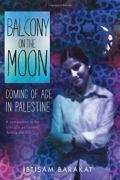
Balcony on the Moon follows Ibtisam Barakat through her childhood and adolescence in Palestine from 1972-1981 and chronicles her desire to be a writer.

Balcony on the Moon follows Ibtisam Barakat through her childhood and adolescence in Palestine from 1972-1981 and chronicles her desire to be a writer.
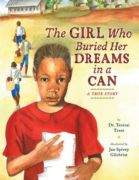
This is the story of a little girl with big dreams. All the girl ever wanted was an education. But in Rhodesia, education for girls was nearly impossible. So she taught herself to read and write with her brother’s schoolbooks and to count while watching cattle graze. When the girl became a young wife and mother, she wrote her goals on a scrap of paper and buried them in a can—an ancient ritual that reminded her that she couldn’t give up on her dreams.
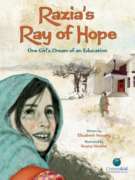
Razia dreams of getting an education, but in her small village in Afghanistan, girls haven’t been allowed to attend school for many years. When a new girls’ school opens in the village, a determined Razia must convince her father and oldest brother that educating her would be best for her, their family and their community.
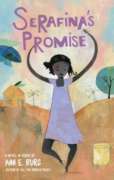
In a poor village outside of Port-au-Prince, Haiti, Serafina works hard to help her family, but dreams of going to school and becoming a doctor–then the earthquake hits and Serafina must summon all her courage to find her father and still get medicine for her sick baby brother as she promised.

Presents the true story of Shannen Koostachin and the people of Attawapiskat, a Cree community just below the Arctic Circle, who have been fighting for a new school since 1979, when a fuel spill contaminated their original school building.
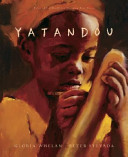
Yatandou lives in a Mali village with her family and neighbors. And though she is only eight years old and would much rather play with her pet goat, she must sit with the women and pound millet kernels. To grind enough millet for one day’s food, the women must pound the kernels with their pounding sticks for three hours. It is hard work, especially when one is eight years old. But as they work, the women dream of a machine that can grind the millet and free them from their pounding sticks. But the machine will only come when the women have raised enough money to buy it. Yatandou must help raise the money, even if it means parting with something she holds dear. Through the eyes and voice of a young girl, award-winning author Gloria Whelan brings to life one village’s dream of a better future. Atmospheric paintings from artist Peter Sylvada capture the landscape and spirit of this inspiring story of sacrifice and hope.
See the review at WOW Review, Volume 5, Issue 3.
Looks at the history and culture of ancient China, and discusses agriculture, city life, families, leisure pastimes, beliefs, education, trade, and industry.
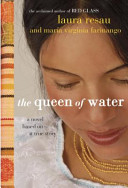
Born in an Andean village in Ecuador, Virginia lives with her large family in a small, earthen-walled dwelling. In her village of indígenas, it is not uncommon to work in the fields all day, even as a child, or to be called a longa tonta—stupid Indian—by members of the ruling class of mestizos, or Spanish descendants. When seven-year-old Virginia is taken from her village to be a servant to a mestizo couple, she has no idea what the future holds. In this poignant novel based on a true story, acclaimed author Laura Resau has collaborated with María Virginia Farinango to recount one girl’s unforgettable journey to self-discovery. Virginia’s story will speak to anyone who has ever struggled to find his or her place in the world. It will make you laugh and cry, and ultimately, it will fill you with hope.
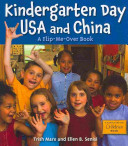
Readers spend a school day with two kindergarten classes in this flip-me-over book. One side tells the story of a class from Schenectady, New York, and the other side tells of a class from Beijing, China. As the day progresses, clocks show the time in the USA and in China, noting that its daytime on one side of the world and nighttime on the other. Discover the differences and similarities between these two countries as the classes participate in activities such as reading stories, drawing pictures, eating lunch, playing at recess, and solving problems.
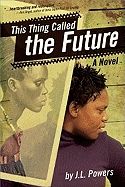
Khosi lives with her beloved grandmother Gogo, her little sister Zi, and her weekend mother in a matchbox house on the outskirts of Pietermaritzburg, South Africa. In that shantytown, it seems like somebody is dying all the time. Billboards everywhere warn of the disease of the day. Her Gogo goes to a traditional healer when there is trouble, but her mother, who works in another city and is wasting away before their eyes, refuses even to go to the doctor. She is afraid and Khosi doesn’t know what it is that makes the blood come up from her choking lungs. Witchcraft? A curse? AIDS? Can Khosi take her to the doctor? Gogo asks. No, says Mama, Khosi must stay in school. Only education will save Khosi and Zi from the poverty and ignorance of the old Zulu ways.School, though, is not bad. There is a boy her own age there, Little Man Ncobo, and she loves the color of his skin, so much darker than her own, and his blue-black lips, but he mocks her when a witch’s curse, her mother’s wasting sorrow, and a neighbor’s accusations send her and Gogo scrambling off to the sangoma’s hut in search of a healing potion.J.L. Powers holds an MA in African history from State University of New York-Albany and Stanford University. She won a Fulbright-Hays grant to study Zulu in South Africa, and served as a visiting scholar in Stanford’s African Studies Department. This is her second novel for young adults.
See the review at WOW Review, Volume 5, Issue 2 and Volume XI, Issue 3.